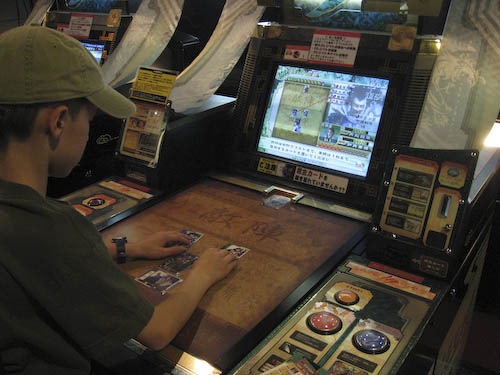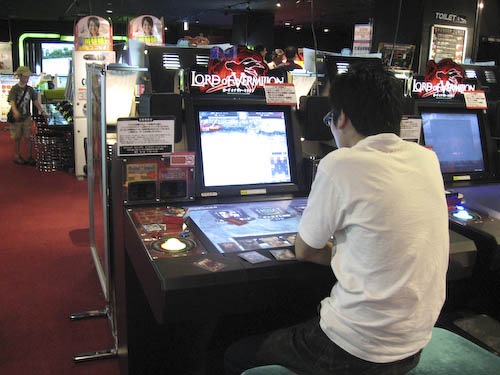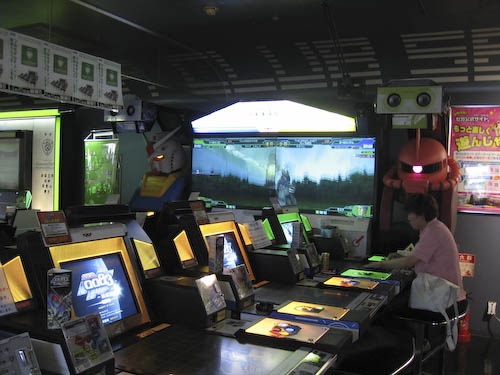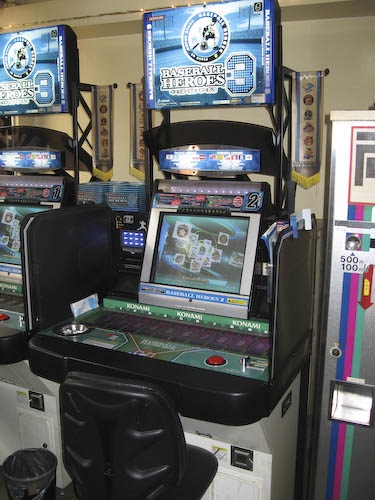Throughout our trip to Japan, I took the boys to go play video games; there were tons of great arcades through out Tokyo and Kyoto. There were a few trends in games that I hadn't seen much of (if at all) yet in the US.
First, many of the popular games had physical components you could use in the game play, like a card or a token. Each time you play, you get another piece, randomly selected. The more you play, the more players or moves you have. This also adds a trading/collectable element to the video game and rewards players who play more often; brilliant. We saw this with Mushiking in the US, but this went even further in Japan, including the Pokemon Battrio game the kids played which gave out poker chip-like tokens with different Pokemon on each (gotta catch 'em all indeed).
A specialized form of this genre involved buying a starter deck of cards for 300-500 yen or so (about US$3-5) and then moving multiple cards from the deck on a game surface to control armies or players. For instance, the boys started playing Sangokushi Taisen3, a real-time strategy game based on the Chinese Three Kingdoms period. (It was pretty interesting learning to play a complex game like this without being able to read anything...) Each card represented a different military unit like archers or cavalry. You position the cards on the surface to select which units were in play and where they started. Then, you move the cards to advance or retreat; you can also turn the card to aim the attacks (like arrows) a particular direction. It was an elegant way of handling a hard UI problem for a video game (normally solved on PCs by mouse and keyboard) -- much more physical and direct.

In addition to Sangokushi, Lord of Vermillion, a party-based real-time adventure game, seemed popular. We also saw a baseball game, a soccer game, and a Gundam 0083 game in this genre. I hope they come to the US soon; they looked really fun. I'm sure they're even more fun if you can understand the instructions!



Leave a comment